| Compact car; Built in Japan, USA |
|
|
| Good condition price range: $1,000 – $1,300* |
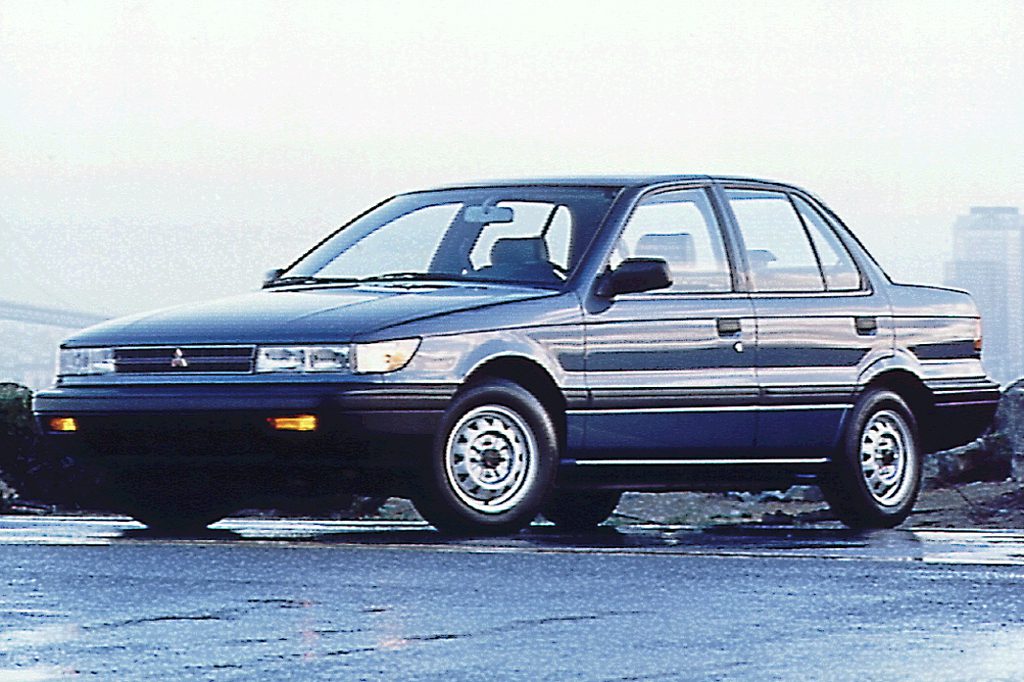
1990 Mitsubishi Mirage 4-door sedan
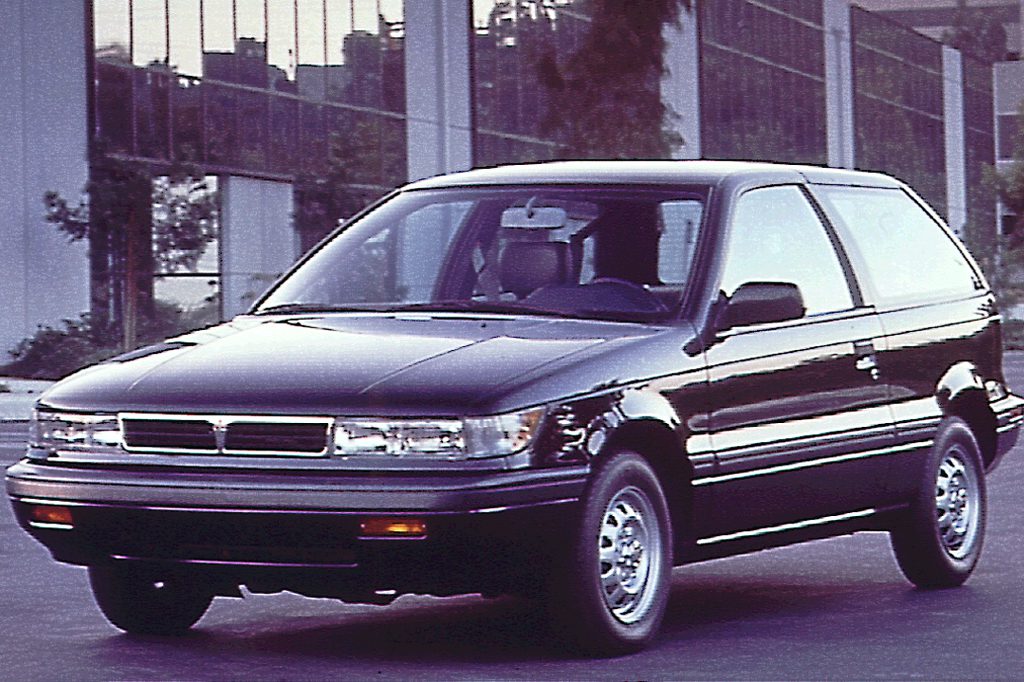
1991 Mitsubishi Mirage 2-door hatchback
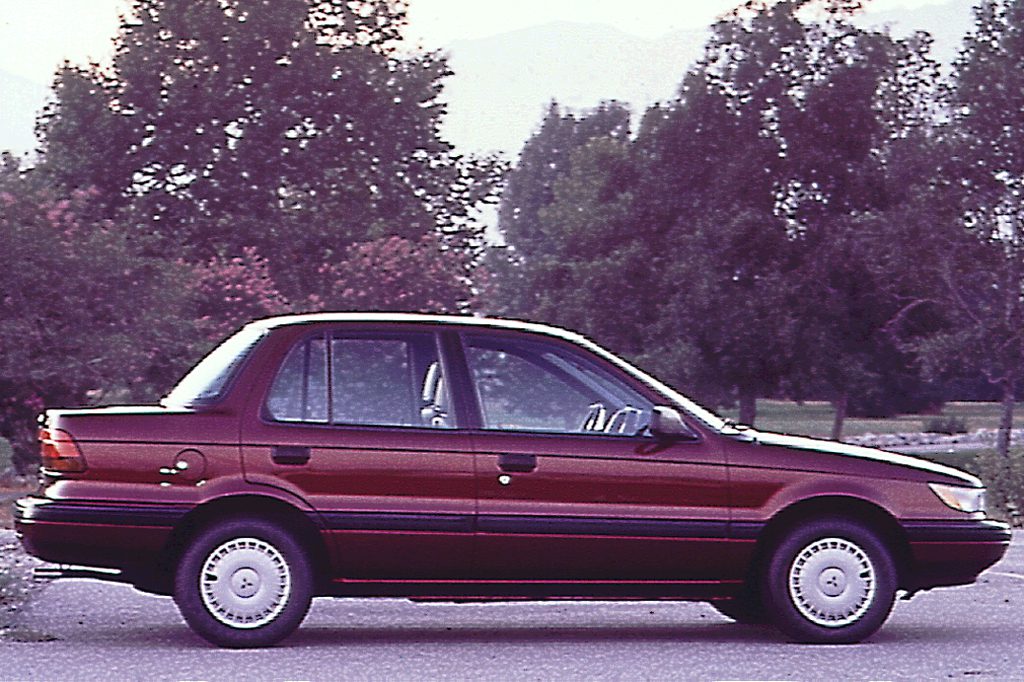
1991 Mitsubishi Mirage LS 4-door sedan
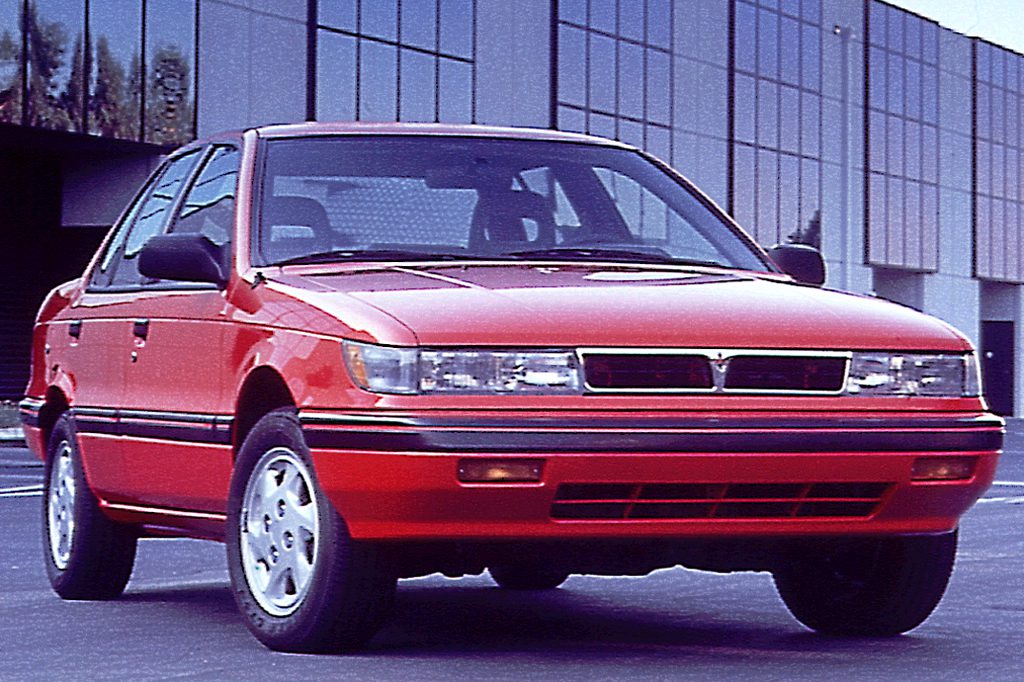
1991 Mitsubishi Mirage GS 4-door sedan
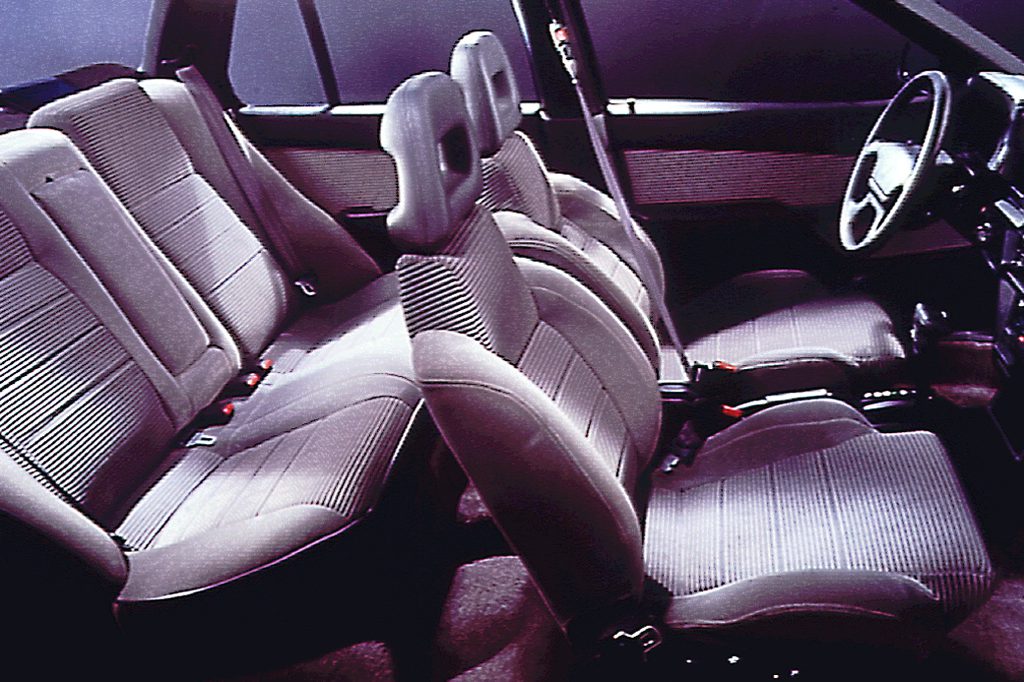
1991 Mitsubishi Mirage interior
| Pros: |
|
| Cons: |
|
Like a batch of rivals, Mitsubishi’s mildly upscale subcompact is a generally competent, well-rounded vehicle. Mirage stood just a bit above the subcompact pack, not because it was particularly great but because it suffered fewer of the usual small-car drawbacks. We’ve liked the GS model for its sporting flair.
Overview
Introduced for 1989, Mitsubishi’s subcompact Mirage was a near-twin to the Dodge/Plymouth Colt and Eagle Summit. The lineup started with a VL (“Value Leader”) 2-door hatchback, followed by a standard 2-door hatchback and a 4-door notchback sedan. Next up were “EXE Special Edition” versions of both body styles. Sportiest member was the RS hatchback. Standard engine was a 1.5-liter 4-cylinder, rated at 81 horsepower. The VL came only with a 4-speed manual transmission; the RS with a 5-speed manual. All other models had a standard 5-speed and optional 3-speed automatic.
Yearly Updates
| 1991 Mirage Changes were considerable for 1991, starting with a fresh grille for all models. Engine output from the base four jumped to 92 with the 3-valve-per-cylinder design introduced for ’91. An optional 4-speed overdrive automatic transmission replaced the 3-speed unit on 4-door models (but the 3-speed remained available for 2-doors). RS and EXE models departed, but a new LS 4-door joined the lineup. So did a GS 4-door sedan with a new 123-horsepower dual-overhead-cam, 1.6-liter 4-cylinder engine. |
| 1992 Mirage Modifications were modest for 1992. Base Mirages got full cloth seat inserts, in place of a vinyl/cloth combination. LS versions adopted a new wheel design and fresh lower rear-body trim. |
